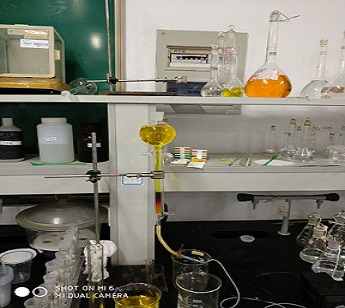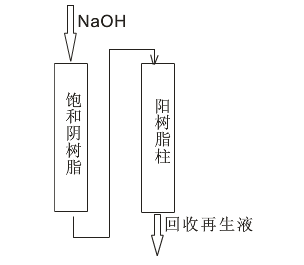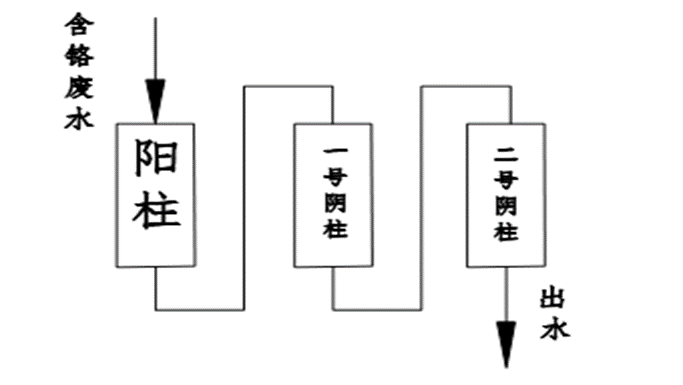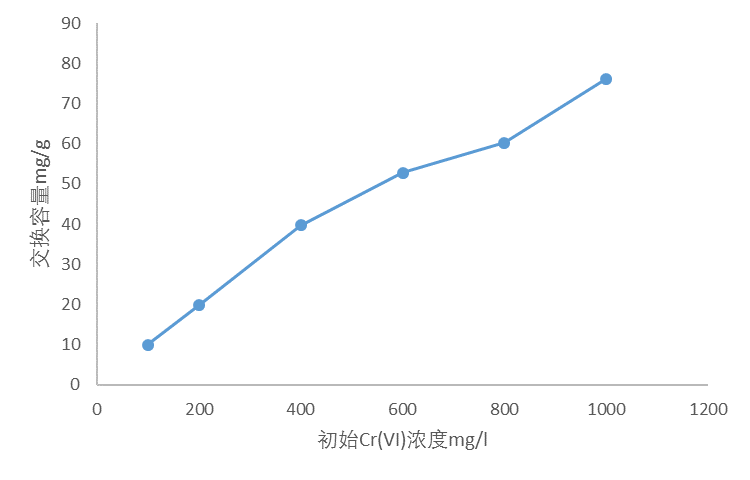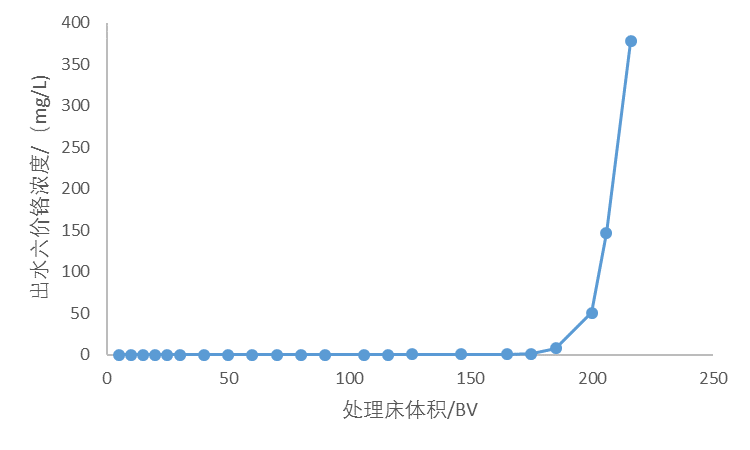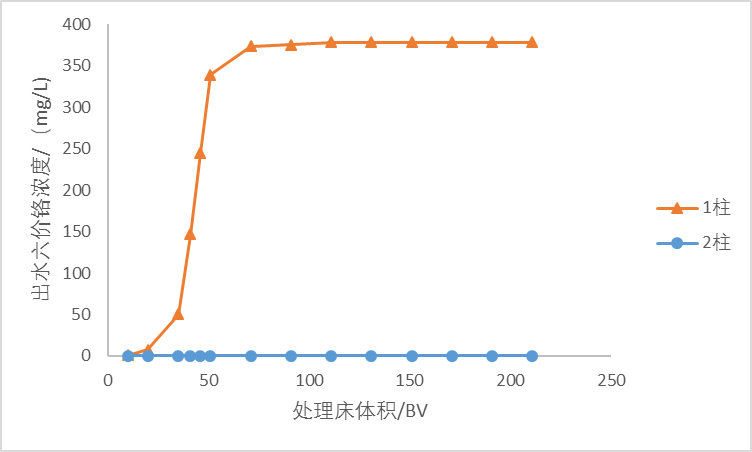离子交换树脂回收处理六价铬废水的工艺研究毕业论文
2020-07-07 21:54:52
摘 要
本文采用静态振荡交换吸附与动态串联柱全饱和阴离子交换法处理废水中的六价铬。结果表明,静态实验中,在27±1℃下,PH在2~4左右,振荡时间为2h时201×7树脂的交换容量最好。动态实验中,模拟废水的初始浓度为500mg/L,动态交换柱流速为16BV/h时,处理量约在144BV,出水浓度低于0.5mg/L,符合排放标准。动态再生中,当再生剂选择1BV8%NaOH 1BV5%NaOH 2BV水,再生流速为1BV/h时,树脂再生率达88.5%。实验证明,离子交换法对低浓度含铬废水具有较高的去除率。
关键词:含铬废水 离子交换法 六价铬
Study on the treatment of
hexavalent chromium wastewater by ion exchange resin.
Abstract
Electroplating, leather tanning, dye and pigment manufacturing, textile, wood preservation and printing and dyeing and other industries widely used metal chromium and its compounds, the discharge of wastewater is the main source of chromium pollution of heavy metals in water environment. Chromium is a ubiquitous element in the environment, and chromium is found in the natural water body mainly in the form of trivalent chromium and hexavalent chromium. The toxicity of chromium depends on the difference of valence state. Trivalent chromium is the essential trace element of human body, which plays an important role in the maintenance of normal physiological function of human body and promotes the growth and development of human body. The oxidative effect of hexavalent chromium and its high mobility and solubility in water can cause great harm to individuals.
In this paper, the hexavalent chromium in wastewater is treated by dynamic series column full saturation anion exchange. Experimental results show that the static experiments, under 27 / - 1 ℃, the PH is controlled in 2 ~ 4, oscillation time of 2 h exchange capacity of the resin is best. In the dynamic experiment, the initial concentration of the simulated wastewater was 500mg/L, and the flow rate of the dynamic exchange column was 16BV/h. The treatment capacity was about 140BV, and the effluent concentration was lower than 0.5mg/L, which met the emission standard. In dynamic regeneration, when the regeneration agent selects 1BV8%NaOH 1BV5%NaOH 2BV water, the desorption velocity is 1BV/h, and the resin desorption rate reaches 88.5%. The experiment proves that the ion exchange method has high removal rate for low concentration chromium wastewater.
Key words: chromium containing wastewater,ion exchange,hexavalent chromium.
摘 要 II
Abstract III
第一章 绪论 3
1.1引言 3
1.2含铬电镀废水的特点与处理技术现状 3
1.2.1含铬电镀废水的特点与危害 3
1.2.2含铬废水的处理技术现状 3
1.3 离子交换树脂对含铬废水的资源化回收处理 6
1.3.1离子交换树脂处理含铬废水的基本原理 6
1.3.2双阴柱串联全饱和工艺 6
1.3.3三阴柱串联全饱和工艺 7
1.4 本论文的研究意义与研究内容 8
1.4.1研究意义 8
1.4.2研究内容 8
第二章 实验部分 9
2.1实验仪器与试剂 9
2.2 树脂的预处理 10
2.2.1阳离子树脂预处理 10
2.2.2阴离子树脂预处理 10
2.3分析方法 10
2.4 实验内容 11
2.4.1六价铬模拟废水的配制 11
2.4.2静态交换实验 11
2.4.3动态交换实验 12
2. 4. 4再生剂不同浓度以及流速对树脂再生效果的影响 13
2.4.5铬酸回收 13
2.5实际废水实验 13
第三章 实验结果与讨论 15
3.1静态实验 15
3.1.1筛选树脂 15
3.1.2 pH对树脂交换性能的影响 15
3. 1. 3铬初始浓度对Cr(VI)交换容量的影响 16
3. 1. 4树脂投加量对交换容量的影响 17
3.2动态柱交换实验 17
3.2.1交换流速的影响及批处理量的确定 17
3.2.2初始铬浓度对柱交换性能的影响 18
3.3树脂再生实验 19
3.3.1不同再生剂组合对再生效果的影响 19
3.3.2再生流速对再生效果的影响 20
3.3.3树脂的稳定性实验 20
3.4实际废水应用 21
第四章 结论与展望 24
4.1结论 24
4.2存在问题与期望 24
参考文献 25
致谢 27
第一章 绪论
1.1引言
为了提高机械产品和零部件的硬度、耐磨性和抗腐蚀性,在加工制造的时候
需要在碳钢产品表面镀上一层硬铬。在镀铬工艺过程中,镀件喷淋清洗、电镀槽清洗、镀件退镀、跑冒滴漏和地面冲洗等环节都会产生高浓度的六价铬(铬(Ⅵ))废水。由于含铬化合物尤其是铬(Ⅵ)毒性高、易被人体吸收,对生态环境和人体健康危害很大,世界各国都对含铬污染物制订了非常严格的排放限值。
目前国内外关于含Cr(Ⅵ)废水处理方法的研究主要集中在化学沉淀法电解法、膜分离法、吸附法、离子交换树脂法[1]。
1.2含铬电镀废水的特点与处理技术现状
1.2.1含铬电镀废水的特点与危害
Cr元素在自然环境中存在多种形态,化合价于-2~ 6之间。当pH<1.0 时,铬主要存在形态为铬酸 ;pH在1.0~6.0时,存在形式主要为铬酸氢根离子;当pH>6.0 时,存在形式主要为铬酸根[2]。
1.2.2含铬废水的处理技术现状
(1)化学沉淀
化学沉淀法可分为两类:钡盐沉淀法和还原沉淀法。
相关图片展示:
